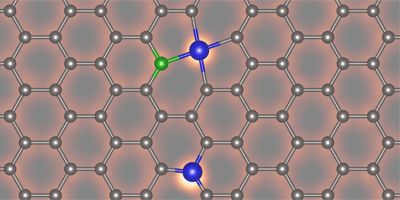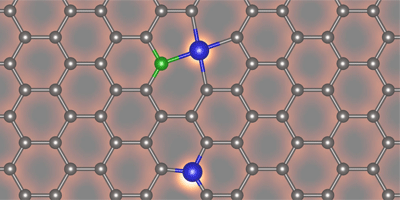Identification by Bonds
Silicon is one of the most common impurities to adsorb on graphene grown by chemical vapor deposition, and significantly affects graphene’s transport properties. Understanding the chemistry of these impurities is thus important, especially if the desire is to integrate graphene with silicon electronics. So far, no techniques have been able to characterize individual silicon-carbon bonds. Now, writing in Physical Review Letters, Wu Zhou at Vanderbilt University, Tennessee, and collaborators demonstrate they are able to deduce the nature of these bonds by combining several electron microscopy techniques.
Zhou et al. studied the energy loss of electrons aimed at a graphene surface containing silicon impurities. Similar experiments did this before, but lacked the signal strength to accurately analyze the bonds. Zhou et al. overcame this difficulty by combining their study with annular dark-field imaging, a method that excludes the unscattered beam to obtain images in which intensity provides chemical information about the sample.
By comparing their spectroscopic data with density-functional-theory calculations, they can easily tell the difference between silicon bonded to four or three carbon atoms, raising the prospect that the combination of these different electron microscopy techniques could allow the study of chemical bonding at the single impurity level in other two-dimensional materials. – Daniel Ucko





